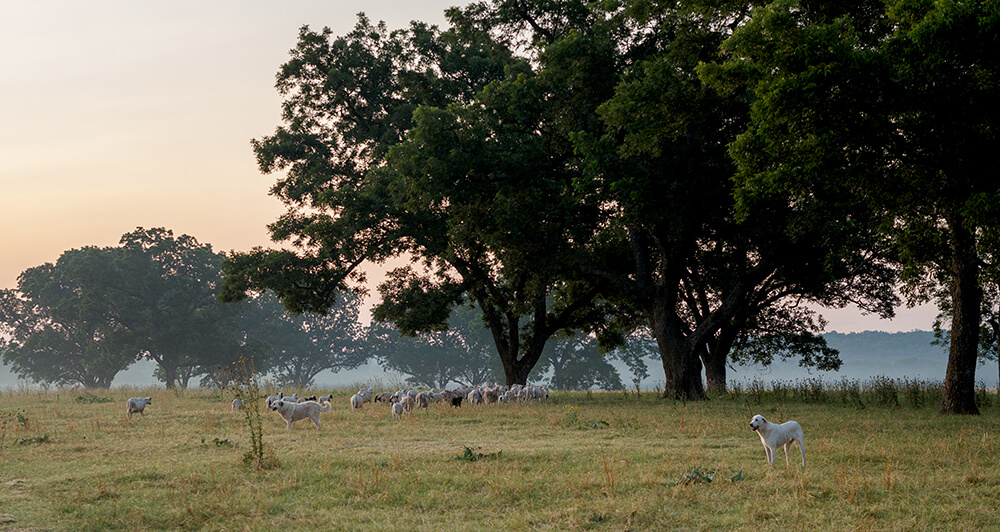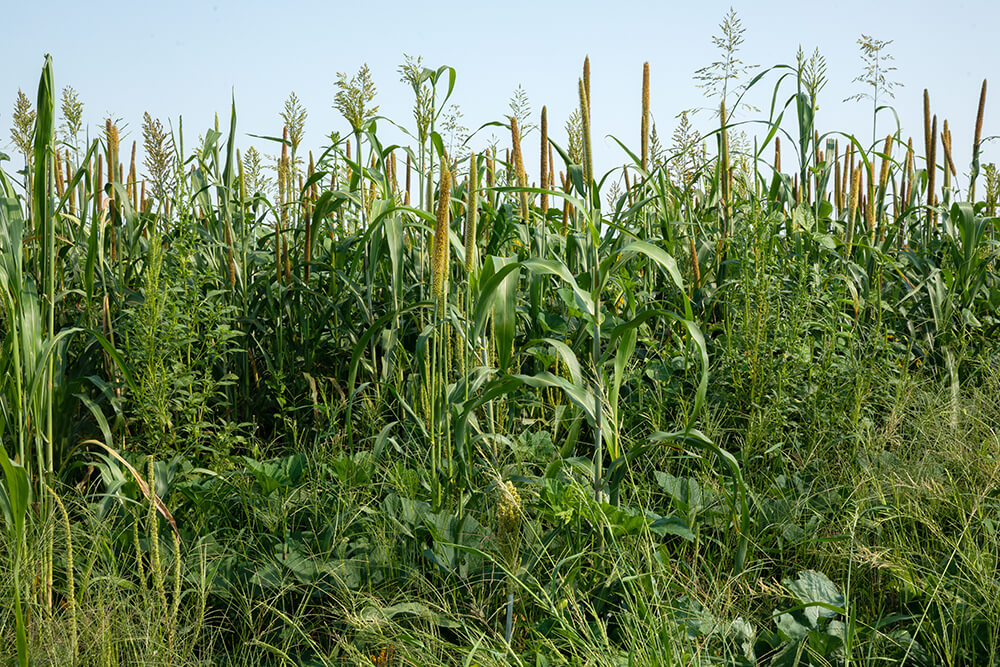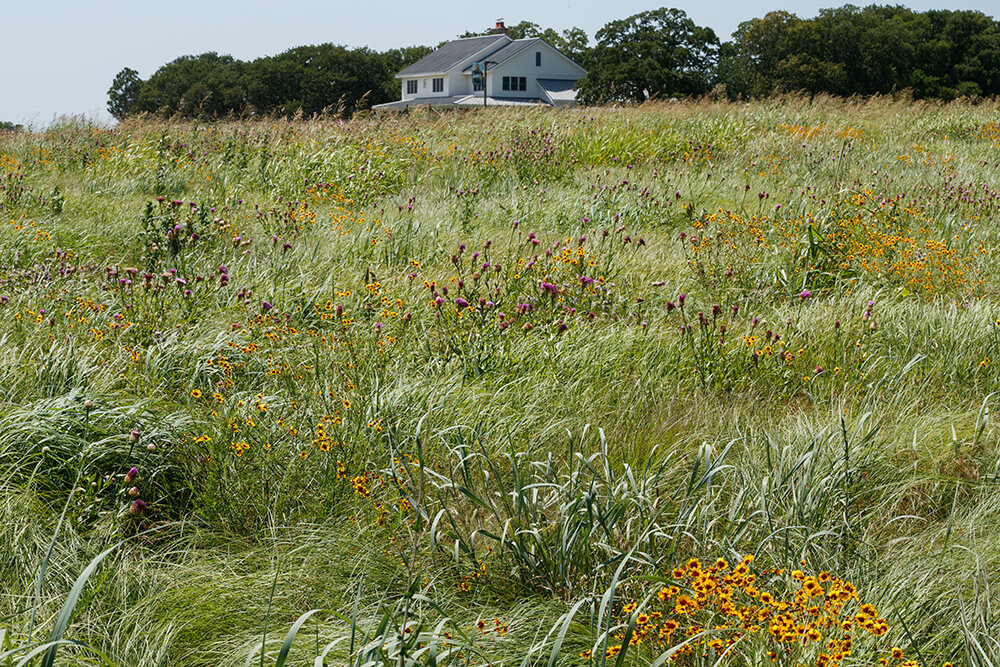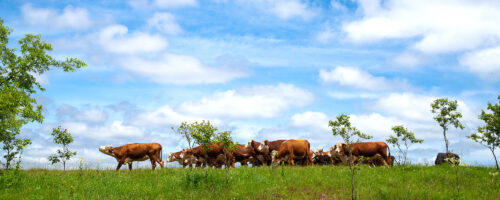Can Management Alone Build Plant Diversity, or Are Cover Crops Always Needed? One Expert Weighs In.
Cover crops have skyrocketed in popularity over the last several years — and for good reason. But are they always the only answer? Steve Swaffar, ag consultant at Noble Research Institute, says, “it depends.”
Cover crops have skyrocketed in popularity over the last several years — and for good reason. But are they always the only answer? Steve Swaffar, ag consultant at Noble Research Institute, says, “it depends.”
Below, Swaffar outlines three scenarios and gives his recommendations to answer the question of “plant or manage” for each one, as well as tips for how and when to plant or overseed cover crops. The No. 1 goal in all of them is to increase forage diversity to improve soil health, ideally while still being able to graze.

Scenario 1: Park the sprayer and close the gates.
He says there are certain situations where “you can park the sprayer and close the gates and let the forages rest. You will begin to see more native species starting to express themselves, because you’re no longer spraying them out.”
However, Swaffar says, the natives that start to come up are typically forbs (still grazeable), and not immediately the “big four” desirable native grasses: little bluestem, Indiangrass, big bluestem and switchgrass.
And, he puts the emphasis on resting the forage, “because it won’t reset seed if you continue to graze it. Realistically, you’re talking about a lengthier restoration project if you’re just going to let it happen through rest. It is probably the most cost-effective way to do it just from an investment standpoint, but you’ve got a temporary loss in available forage as well.”

Scenario 2: Go from cropland to grazing forage.
This possibility arises when a rancher has a farm field used for crop production, he says.
“You can let that, as we say, “go back” — and typically there is some seed still resident in the soil that will begin to express itself.” And again, most of the time it’s what many crop producers have determined is undesirable for them, as in “it’s a weed, and I don’t want it.”
Swaffar says, however, “what we are discovering is that most of those weeds are forage. It’s just when do you eat it, who eats it and how much of it.”
When it comes to seeding cropland to help the process along, he says one method is to use a “perennial break” by planting a species like alfalfa, chicory or crimson clover — or a suite of species better adapted to growing in those soil conditions. Put in such crops with a grass base, either fescue or another “tame” grass, and let that grow for five to six years.
“You can graze it in the meantime as you build soil and reintroduce animal impact,” he says. “After year five or six, you can either go back to cropping in a really improved soil, or you can now begin the restoration of native species. You’ve already got a suite of perennial species that will be there to help shepherd those more sensitive grasses and forbs.”
Yes, it’s a long process. “Those grasses just don’t reestablish easily,” he says. “By keeping the soil covered and having something growing and feeding that soil biology in the meantime, is going to be really important to the success of those native grasses now coming back.”

Scenario 3: Adding diversity to introduced-grass monocultures.
“Down here in the Southern Great Plains, where we have a lot of introduced grasses, the best way to introduce diversity is through annuals,” he says. There are two windows in which to do that: in the fall, and in the spring before the bermudagrass or other established, introduced grasses start to green up and grow.
In the fall, “you can get some diversity through winter-hardy species, which are primarily small grains such as wheat, rye, barley, those kinds of things,” Swaffar says. “The other opportunity is, as the Bermuda starts to go back to a less-productive state and head toward dormancy, you can plant annuals, and that will give you a late-summer-into-fall grazing as well as a lot of diversity.”
He says he believes that the greatest opportunity to introduce diversity in this scenario is from both annuals and perennials. Swaffar inserts an important caveat before he describes a plan for doing that, however.
“Realize that you’re not going to take a Bermuda-based pasture to a more diverse perennial pasture in one season. It just doesn’t happen,” he says. “Bermuda is too aggressive, and the soils just aren’t capable of it.”
So, he recommends a step-wise process. When selecting an annual cover-crop mix — whether it’s four or five species, or it’s eight or 10, depending on the individual and the soil — “also include a small percentage of perennial seed in with those annuals.”
Specifically, Swaffar says he typically starts with a clover species, “because clover do really well in some pretty crappy conditions. It’s a small seed, so you can get good seed-to-soil contact right off the bat, and typically you’ll see some growth out of clover that first season.”
Some of the natives in the mix may take three or four years for that seed to germinate and express itself, he says, and some are even triggered by fire. It’s really a matter of trying to pick the species that are going to have the greatest chance of success in your pasture conditions at the time.
“If your soils are pretty degraded and not really going to provide that nutrient value for a multi-species planting,” Swaffar says, “you probably have to start fairly simple with two or three species and increase that over the years.”
When it comes to increasing diversity bermudagrass pastures, he says the key “is to quit spraying it. A lot of stuff will come up if you don’t spray it. It may not all be grazeable, but the idea is you’re trying to create a competitive advantage for these other species over that Bermudagrass or over that fescue or whatever that other grass is. And over time, that will happen.”




Comment